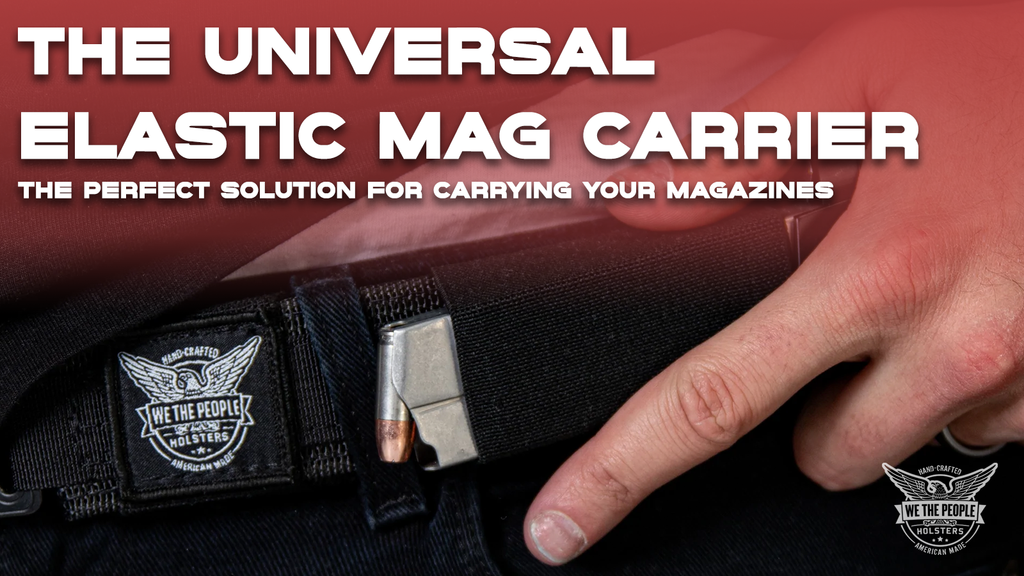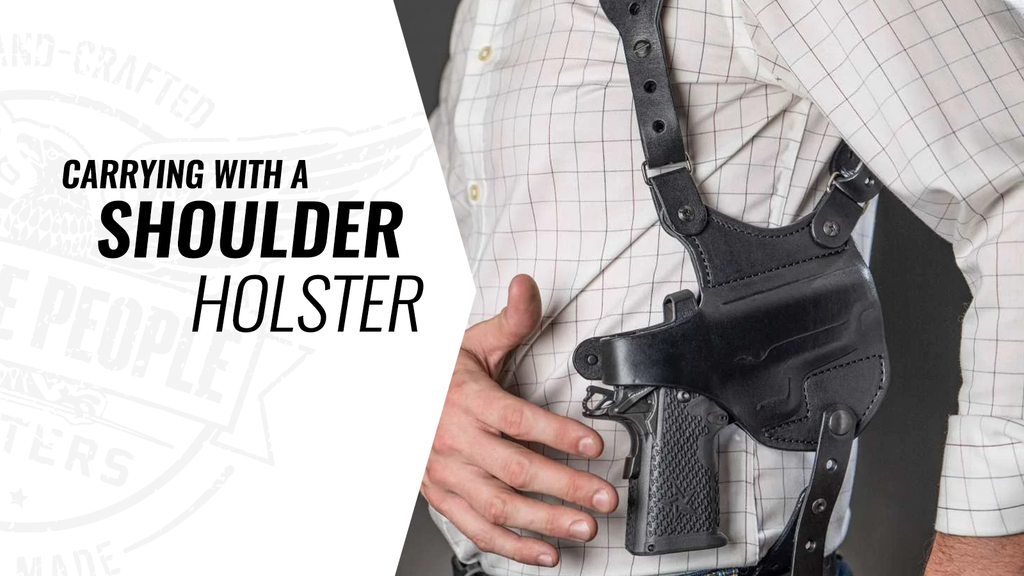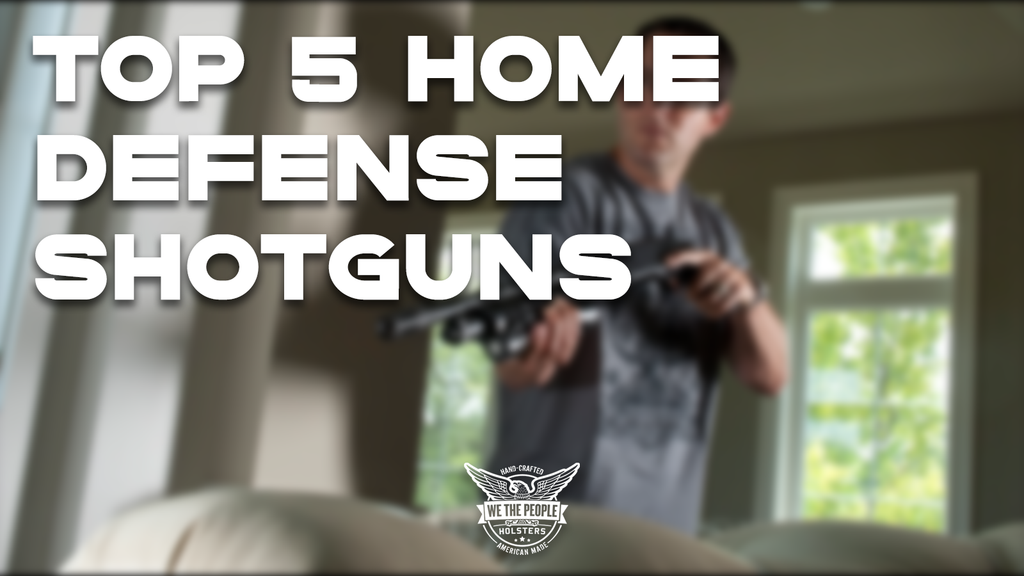While not as common as appendix or strong side carry, the cross draw position has its advantages and followers. Whether for sport or self-defense, cross draw can be comfortable and convenient, depending on your circumstances.
What is Cross Draw?
In cross draw concealed carry, you carry your handgun in a holster on the support or weak side — the side opposite your dominant hand — with the butt canted forward in the cross draw position. To draw from this position, you reach across your body with your strong hand.
Among the four standard waistband positions — appendix, strong side, cross draw, and small of the back — cross draw is not as popular as it was in the 19th century. However, it does continue to have its specialized applications and benefits.
Benefits of Cross Drawing
The benefits of carrying a handgun in a cross draw holster include:
Seated access and comfort
One of the primary advantages of the cross draw position compared to appendix carry and strong side is that it increases access and comfort when seated. If you spend prolonged periods driving or riding as a passenger in a vehicle, cross draw carry can be convenient.
Cross draw may be the optimal choice for those who regularly use a wheelchair or whose professions require sitting behind a desk.
Discreet access
If you carry a handgun in a cross draw holster on your belt and wear a jacket or shirt that opens in the front, you can discreetly place your hand on the weapon by folding your arms. This can be useful for achieving a preparatory firing grip on the gun if you perceive a potential threat that doesn’t yet justify drawing your weapon.
Carrying a backup gun
If you carry an auxiliary weapon (a backup gun), such as a snub-nosed revolver, wearing it in a cross draw holster allows you to gain access more rapidly than either an ankle holster or a pocket holster.
It has been customary for undercover police officers to wear a backup gun in a cross draw holster and a primary duty weapon on the strong side.
Accommodating to injuries
A quality that the cross draw position shares with appendix carry is that it doesn’t aggravate rotator-cuff disorders or shoulder injuries. This can pose a challenge with strong side carry, which requires the shooter to rotate and raise their shoulder to draw.
If you have pain in your lower back or strong side hip, cross draw eliminates that problem, allowing you to carry the weight of your gun on the opposite side. Hip carry is also beneficial for those recovering from injuries or surgical operations to the abdomen.
Sport
Cross draw is common for shooters participating in Cowboy Action Shooting competitions, especially for carrying two Colt Single Action Army revolvers.
Disadvantages of Cross Drawing
Cross drawing your weapon has several drawbacks you should consider, such as:
Safety
Every carry position poses challenges regarding safety and requires a specific technique to minimize risk. In the cross draw position, you need to ensure that when you draw the weapon, you don’t unintentionally cover your support arm with the muzzle of the gun or sweep bystanders. This requires diligent practice, and you should practice your draw stroke regardless of how you carry your firearm.
When you draw your gun from a cross draw holster, practice consistently raising your support arm to avoid covering it with the muzzle. Start with the cross draw hip facing slightly toward the target. As you draw the gun, thrust it immediately toward the target to avoid potentially sweeping the range or yourself. This also has the added benefit of achieving rapid target acquisition.
Exposure
One of the main complaints against cross drawing is that, as the butt of the weapon is pointing forward, it’s easier for an assailant to grab the gun in a frontal assault. You can mitigate the risk by placing the holster closer to the navel.
Speed
Cross draw is not the fastest carry position for an individual when standing. If you have a pronounced abdomen or broad shoulders, you may find that the reach is increased, delaying your ability to access your firearm in an emergency.
However, while slower to draw from using the strong hand, it does allow for faster access with the weak hand in the cavalry draw position.
Range limitations
As with appendix carry, some gun ranges and shooting schools do not permit cross draw holsters because of the perception of increased risk.
If you don’t draw your weapon correctly, you may unintentionally sweep other range attendees or safety officers. This is an important consideration because you should practice drawing and engaging the target with any carry method to ensure safety and proficiency with your self-defense firearm.
Alternative Cross Draw Techniques: Cavalry Draw
Cavalry draw was a standard cross drawing method among the U.S. Army cavalrymen during the 19th century. In traditional cavalry draw, the soldier wears the revolver on his right hip with the butt facing forward and draws with his left hand. At the time, the right hand was reserved for the saber.
However, cavalry draw also refers to the practice of wearing the revolver or pistol butt forward on the strong side and drawing with the strong hand or on the weak side and drawing with the weak hand.
To draw in this manner, rotate your hand, palm outward, with the thumb pointing rearward and grip the pistol. Draw the gun, rotate the muzzle up and forward, and thrust the weapon toward the target.
The Best Holsters for IWB or OWB Carry
At We The People Holsters, our products are suitable for various carry positions, from appendix and strong side to cross draw.
If you’re interested in carrying in the cross draw position, our Kydex and leather holsters allow you to adjust the retention, ride height, and cant to your personal preferences. Every holster we sell has passive retention for a secure hold and fully encloses the trigger guard, ensuring a safe, efficient draw stroke.





